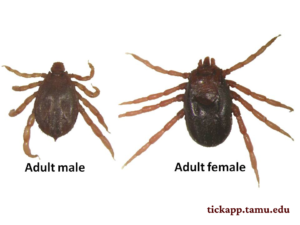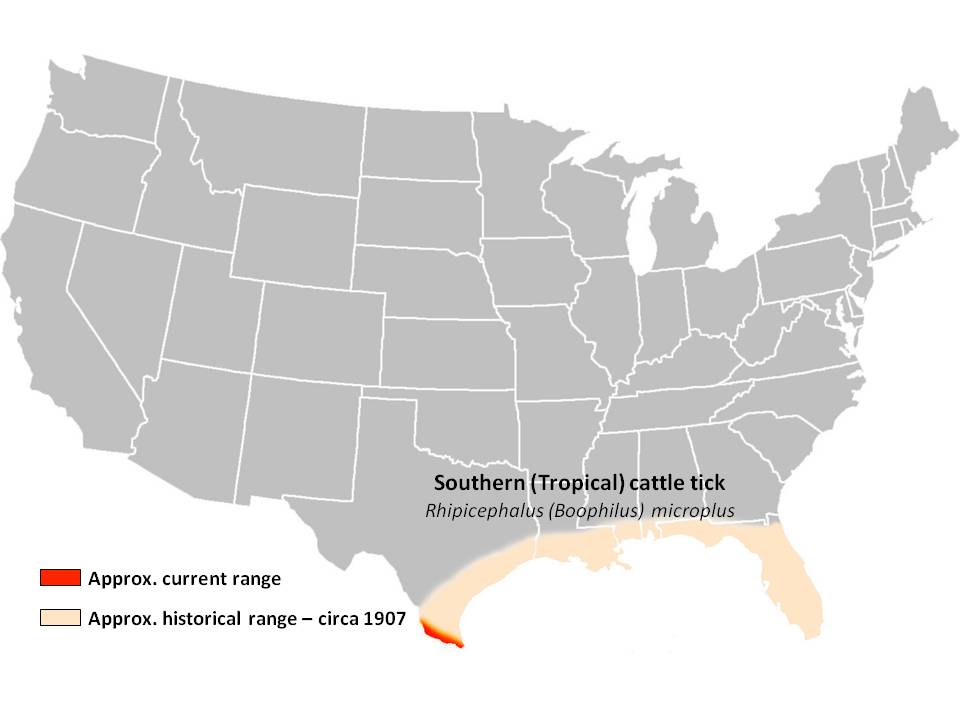
Species: Rhipicephalus (Boophilus) microplus (Canestrini)
*REGULATORY TICK SPECIES*
Description: This tick exhibits short, compact palps (mouthparts) with lateral ridges and a hexagonally shaped basis capitulum. Color among adults is relatively uniform, typically consisting of shades of brown and an inornate scutum. Adult ticks have eyes and an anal groove is present in front (anterior) of the anus. Males differ from the other cattle tick species, having a noticeable “tail”, or pointed rear (posterior) dorsum.

Distribution: Historically, the range of the Southern cattle tick in the US included parts of south Florida and the southern tip of Texas. As a result of state and federal tick eradication programs, the distribution of this tick in the US is currently restricted to the designated quarantine zone of extreme south Texas. Incursions of new ticks on free-ranging endemic and exotic wildlife species from areas across the border in northern Mexico remain problematic today. Rhipicephalus (B.) microplus is found throughout much of Mexico, Central and South America, Africa, and Australia.
Hosts: Primary hosts are cattle, but horses, sheep, goats, swine, dogs, and free-ranging wild ungulates including native and exotic deer and nilgai antelope also serve as hosts.
Biology: As with R. (B.) annulatus, the Southern cattle tick is thought to have been introduced to the Western Hemisphere from cattle brought to the New World by European explorers. While native to tropical and sub-tropical regions of southern Asia, this species has been introduced to and flourishes across a wide variety of environments throughout Mexico, Central and South America, Africa and Australia, where it is potentially capable of producing more than four generations under favorable environmental conditions. As a result, the Southern cattle tick is now considered to be the most important tick species affecting livestock in the world. This tick also exhibits a one-host lifecycle, with adult females detaching from hosts in 18-21 days. The similar lifecycle of this tick to that of R. (B.) annulatus makes it suitable for application of quarantine isolation and control strategies used to limit the impact of this species on the US cattle industry.
Associated Disease Pathogens: Rhipicephalus (B.) microplus transmits the haemoprotozoan parasite Babesia bigemina and B. bovis causing Texas cattle fever (babesiosis) in naïve cattle. These ticks are known to also transmit Anaplasma marginale, the disease agent which causes anaplasmosis in cattle.
Similar Tick Species: The Southern cattle tick, R. (B.) microplus is similar in appearance and life habits to R. (B.) annulatus. However, the anterior margin of the dorsum in male Southern cattle ticks is pointed; in R. (B.) annulatus males, this key identifying morphological attribute is absent.
